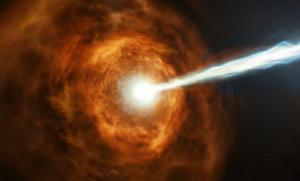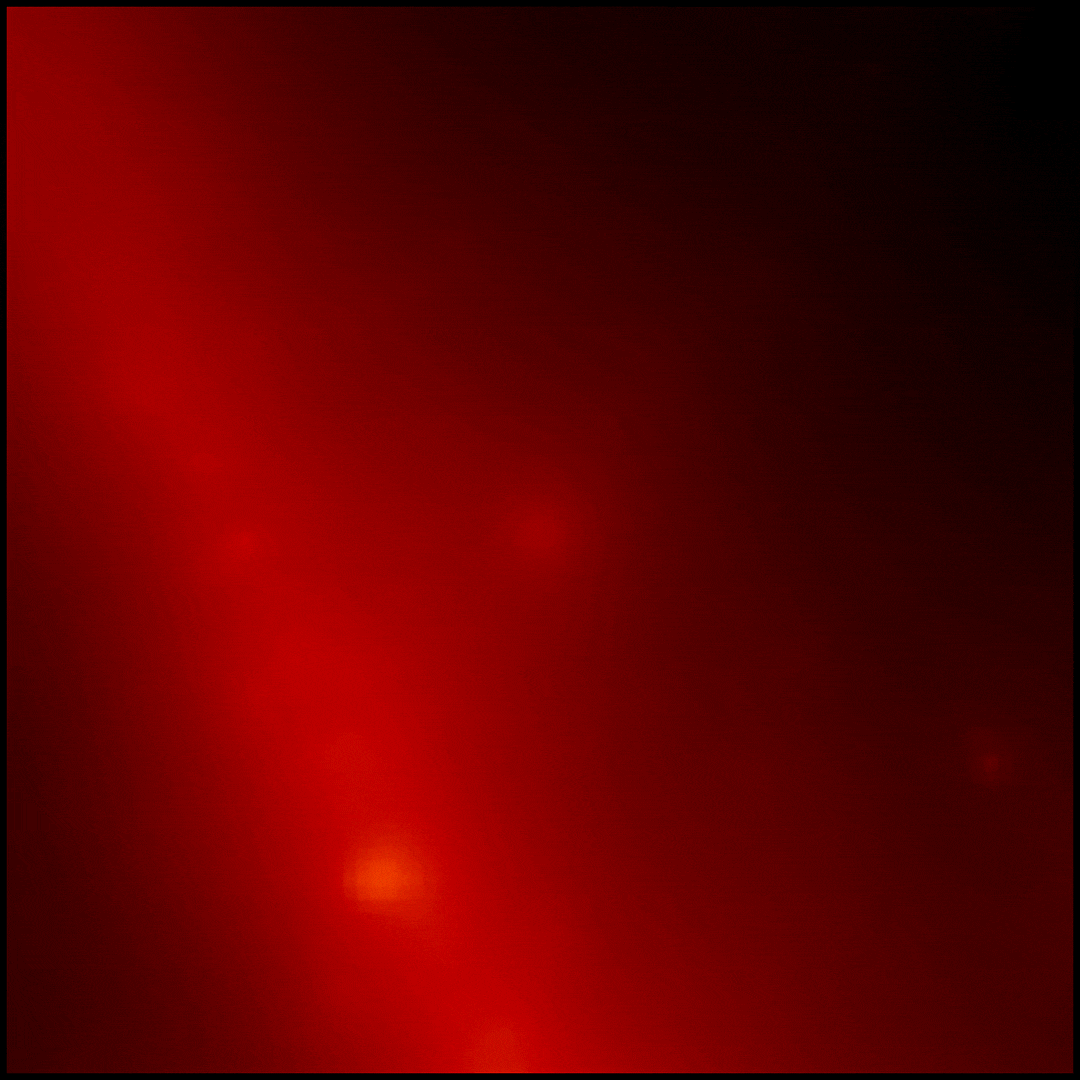Blog
Light the Sky
15 September 2023
 NASA, ESA and M. Kornmesser
NASA, ESA and M. KornmesserOn October 9, 2022, a gamma-ray burst illuminated the solar system. Its light had traveled 2.4 billion years to reach us, having begun its journey when only bacteria and archaea existed on the Earth and oxygen was not yet plentiful in our air. Despite its long journey, the flash of light was tremendously bright.
It was first detected by STEREO A, one of two spacecraft that make up the Solar Terrestrial Relations Observatory. STEREO is designed to study solar storms and can detect surges of charged particles. STEREO A detected an ion surge as the GRB passed by.
 NASA/DOE/Fermi LAT Collaboration
NASA/DOE/Fermi LAT CollaborationNearly 100 seconds later, the light reached Earth. The Neil Gehrels Swift Observatory and Fermi Gamma-ray Space Telescope both observed the event, which is when astronomers became aware of it. Swift and Fermi saw the burst linger for 10 hours. It was initially so bright it saturated Fermi’s detector, and it was bright enough in the visible spectrum for several hours that amateur astronomers were able to catch a glimpse of it. Around the time the light reached Earth, the five THEMIS spacecraft detected surges. They were designed to study Earth’s magnetosphere and its interaction with solar wind.
Nearly four minutes after that, the light of GRB 221009A reached Mars, where the Mars Atmosphere and Volatile Evolution (MAVEN) spacecraft orbits the red planet. It also detected the GRB before the light passed on and eventually out of our solar system.
With one bright event, the light of this distant dying star triggered observations throughout the inner solar system. And it tells us some interesting things. To begin with, by looking at the timing of these observations and the locations of each telescope, we can triangulate the source of the GRB. Fermi and Swift can give us a good idea of its location, but these observations can pinpoint it in the sky to within a degree or so. The study also shows how the heliosphere of our solar system can be affected by high-energy phenomena. Only recently have we had such an array of detectors scattered throughout the solar system. As we continue to grow our interplanetary fleet, studies such as these will become more detailed.
Overall, this is a great example of how our scientific instruments can show us things we never expected. Except for Fermi and Swift, none of the spacecraft that gathered data for this study were designed to study GRBs. They just happened to be in the right place at the right time with an ability to measure its effects. We can only have this kind of study when we pool data together. Proving once again that science is at its most powerful when people work together.